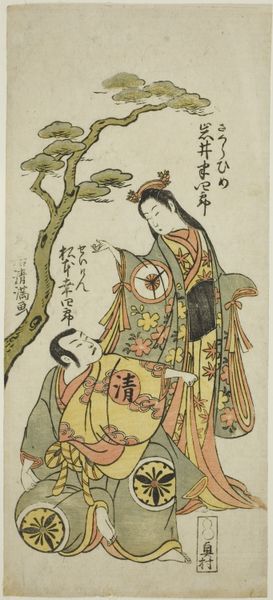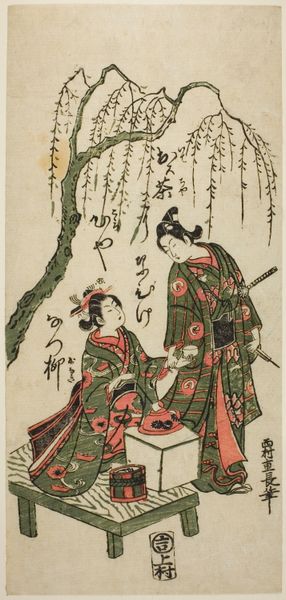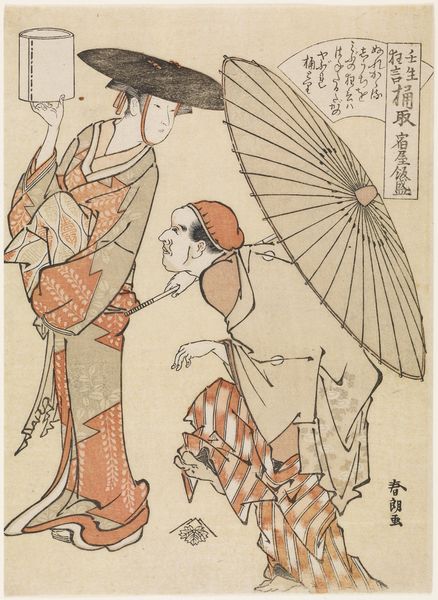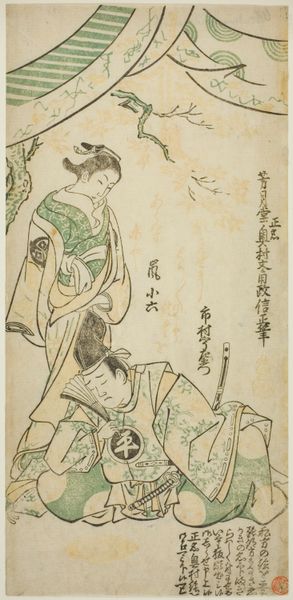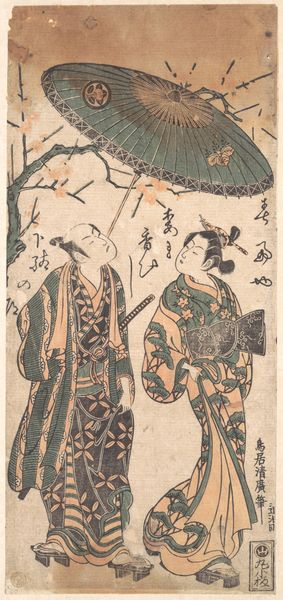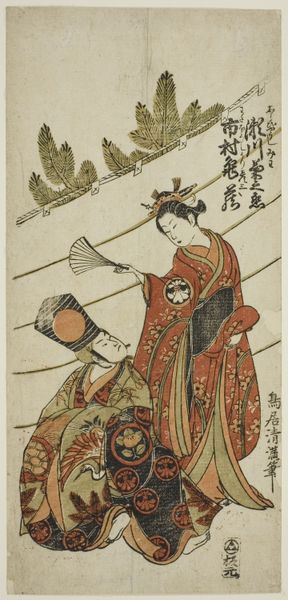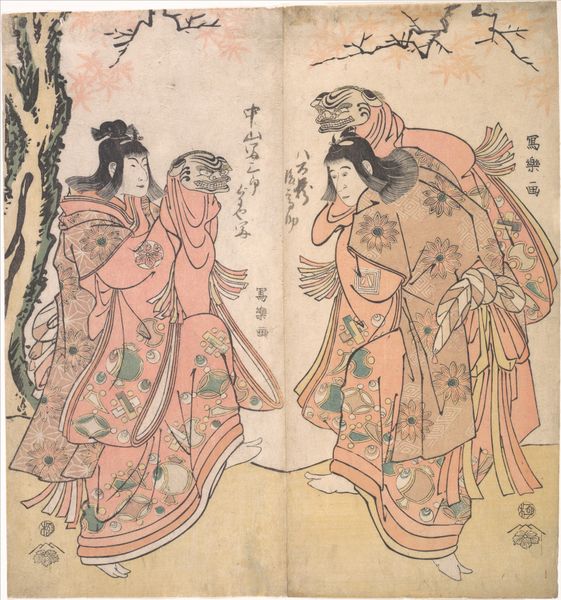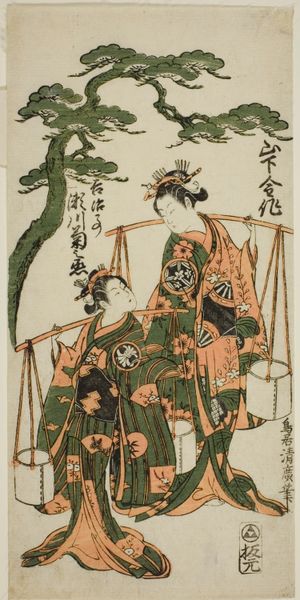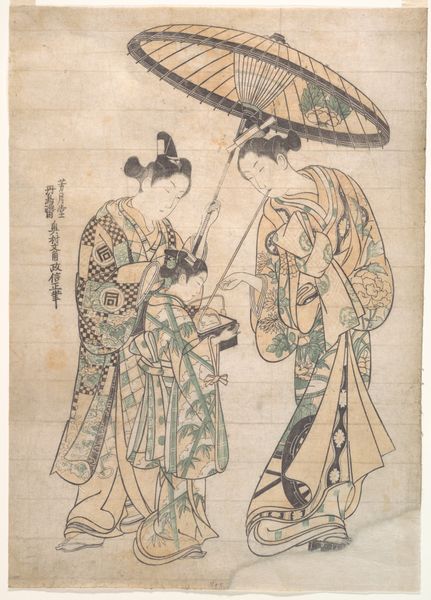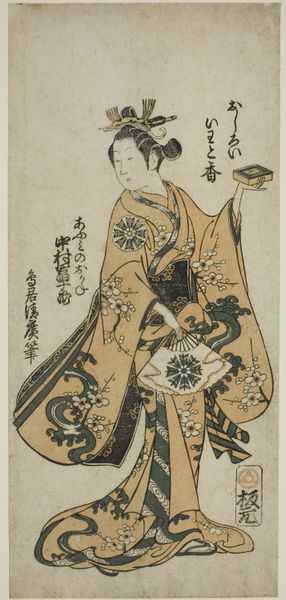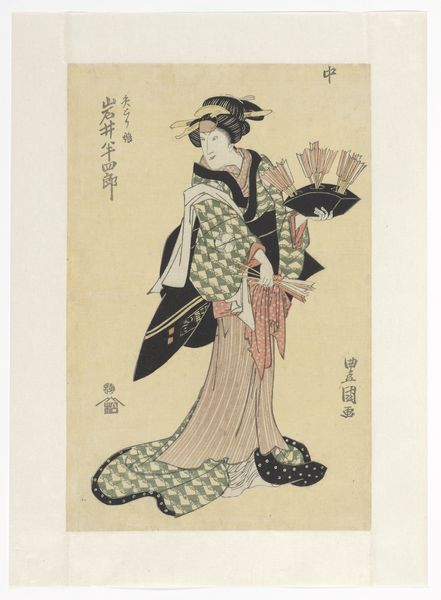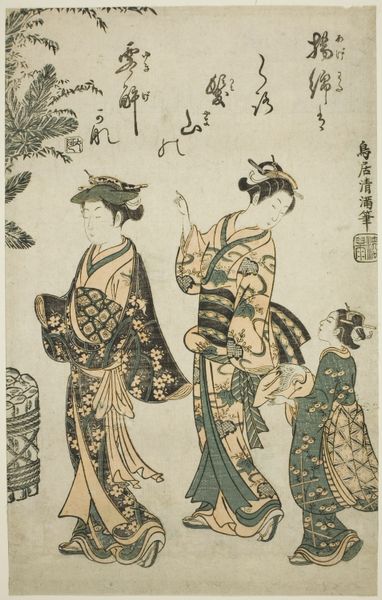
print, woodblock-print
# print
#
asian-art
#
ukiyo-e
#
figuration
#
woodblock-print
#
genre-painting
Dimensions: 17 7/8 × 12 in.
Copyright: Public Domain
Curator: This woodblock print, "Battledore and Shuttlecock," created around 1748 by Ishikawa Toyonobu, presents us with an intriguing glimpse into leisure during the Edo period. It now resides at The Art Institute of Chicago. My immediate reaction? Serene, yet dynamic. The figures are elegant, but their posture conveys action. Editor: Yes, it's tempting to see this print merely as an image of leisure, but it speaks volumes about gender, class, and performance. Consider the elaborate garments. Their style tells a story of specific roles and hierarchies within Japanese society, and that's not separated from art. Curator: The detail achieved through the woodblock printing technique is remarkable. Notice how the patterns on the kimonos aren’t simply decorative; they’re meticulously rendered, a testament to the craftsman’s skill. Look, too, at the gradation of color, achieved through carefully layering the woodblocks. This piece demonstrates high artistry but relies on collaborative craft labor for its production. Editor: Absolutely, and within that craftsmanship, the composition itself stages a narrative. The girl holding the battledore, aiming towards the shuttlecock, enacts a scene of controlled freedom and play. And what are we to make of the viewer being made into voyeur? I wonder if the location of the print might offer some hints about its consumption, too. Curator: The materiality and means of its distribution are paramount to understanding its role in society, then and now. Considering how such prints were made, distributed, and consumed gives insight to a very different economic system. Editor: Ultimately, “Battledore and Shuttlecock” is much more than a snapshot of leisure. It’s a window into the complex interplay of gender roles, social hierarchies, and the performative aspects of everyday life in 18th-century Japan, as told by one specific vision. Curator: Indeed. Examining both the material conditions of its creation and the social context it reflects offers a far richer understanding of its enduring appeal and importance to us now.
Comments
No comments
Be the first to comment and join the conversation on the ultimate creative platform.
